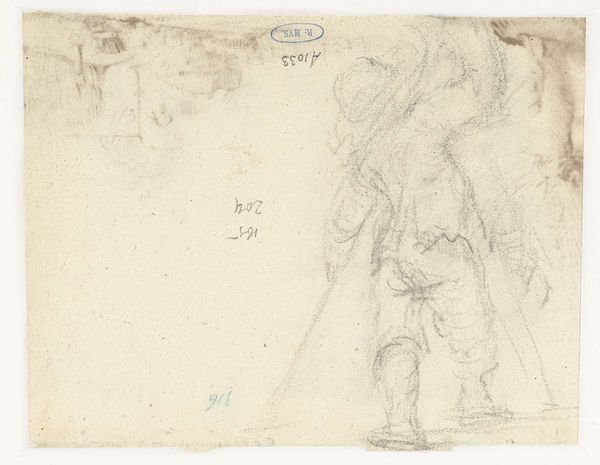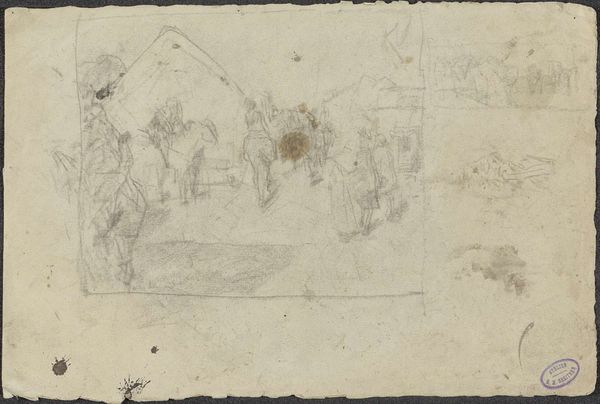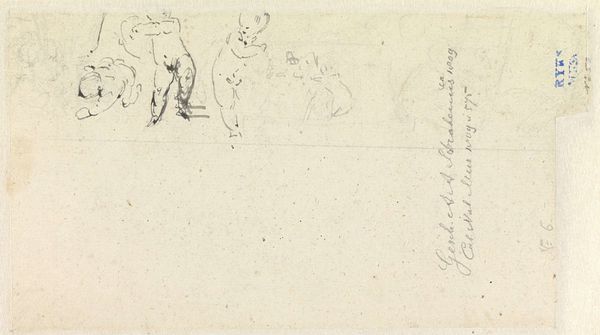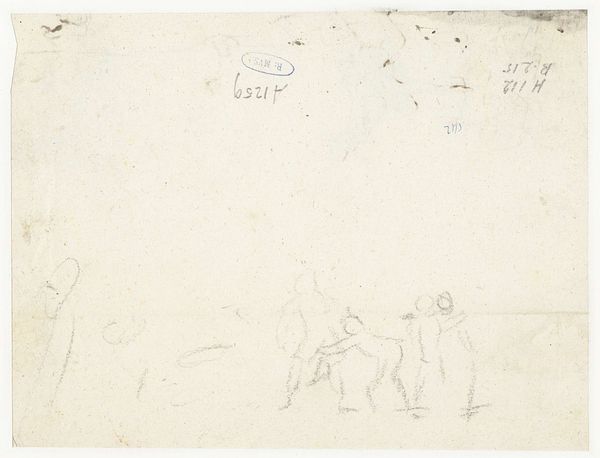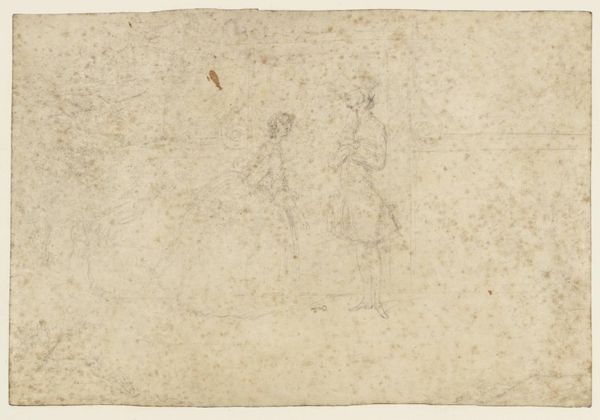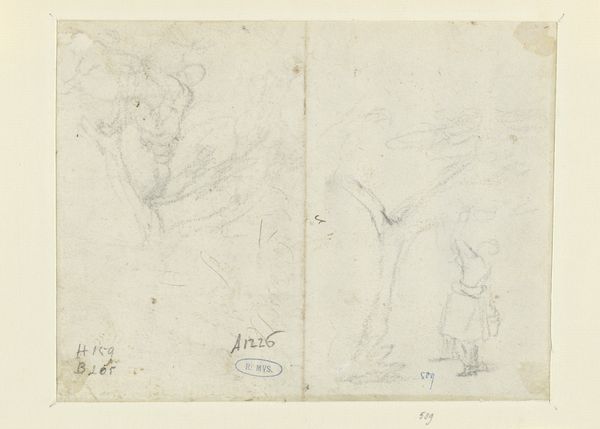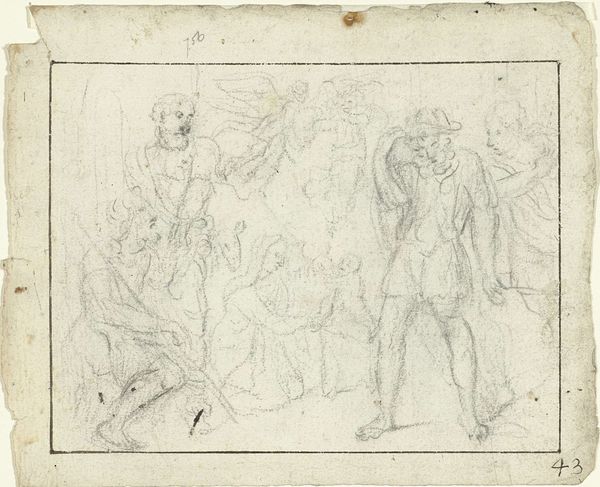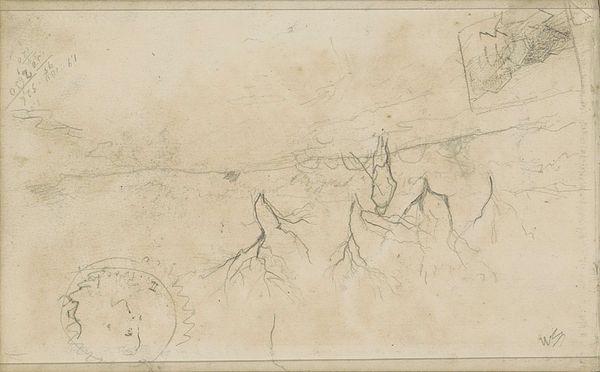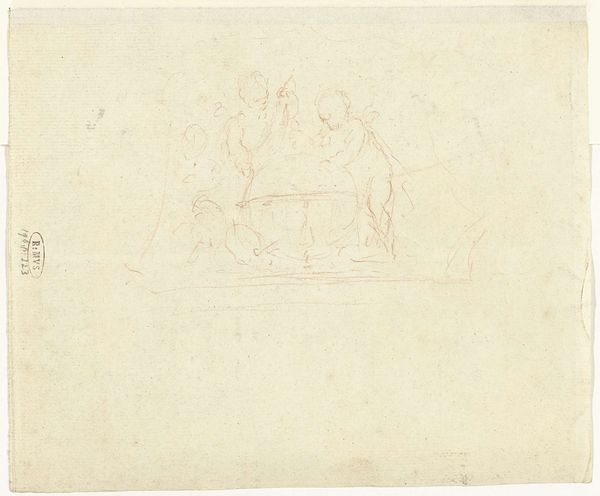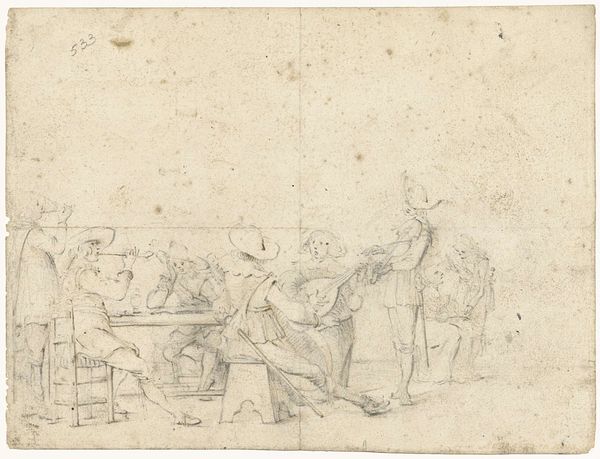
drawing, pencil
drawing
baroque
landscape
figuration
pencil
genre-painting
Dimensions: height 102 mm, width 153 mm
Copyright: Rijks Museum: Open Domain
Curator: So, here we have a landscape drawing entitled "Pastorale Scène met Twee Figuren" which roughly translates to "Pastoral Scene with Two Figures." It's rendered in pencil, and was composed by Gesina ter Borch around 1652. It now resides here, in the Rijksmuseum. What are your immediate thoughts? Editor: Well, it feels incredibly fragile. Like a half-remembered dream or a whispered secret barely captured on paper. There’s something profoundly delicate in the lines; the whole composition feels provisional, tentative almost. Curator: Yes, provisional indeed. Consider the weight of expectation on female artists during the baroque period! Ter Borch using such a simple medium like pencil…the ease of erasing… almost a visible freedom from the pressure of permanence experienced in other forms, maybe oil painting, sculpture, things like that. Editor: Exactly! Pencil in this period isn't just a preparatory tool; it's a declaration. A statement that the act of making, the process of observation and mark-making, holds inherent value. It democratizes art making—cheap paper, simple materials! How were these materials procured? What was the culture surrounding paper and pencils in the Netherlands at this moment? Were women especially likely to employ it due to access constraints, or was it valued by others, such as scholars? Curator: Fascinating points. You really highlight how accessible and radical these materials are for artistic creation, while inviting some challenging gender-related questions. What I see is how wonderfully atmospheric it is for such a simple scene. I feel transported to the fields she must have been witnessing. Editor: I am really trying to engage with where the artist was really coming from in their process, considering what tools they have to make an impact within their context. Like the artist using pencil, and me here at the audio guide interpreting their intention, and you there, as audience, now internalizing our inputs. In that sense, "fragile" is a very powerful descriptor because you notice it as ephemeral the first time. Curator: I like how you’re building upon that idea of impermanence, as almost part of the intended effect. And I think for me the value, ultimately, resides in seeing her own quiet response to nature captured on a humble page.
Comments
No comments
Be the first to comment and join the conversation on the ultimate creative platform.
